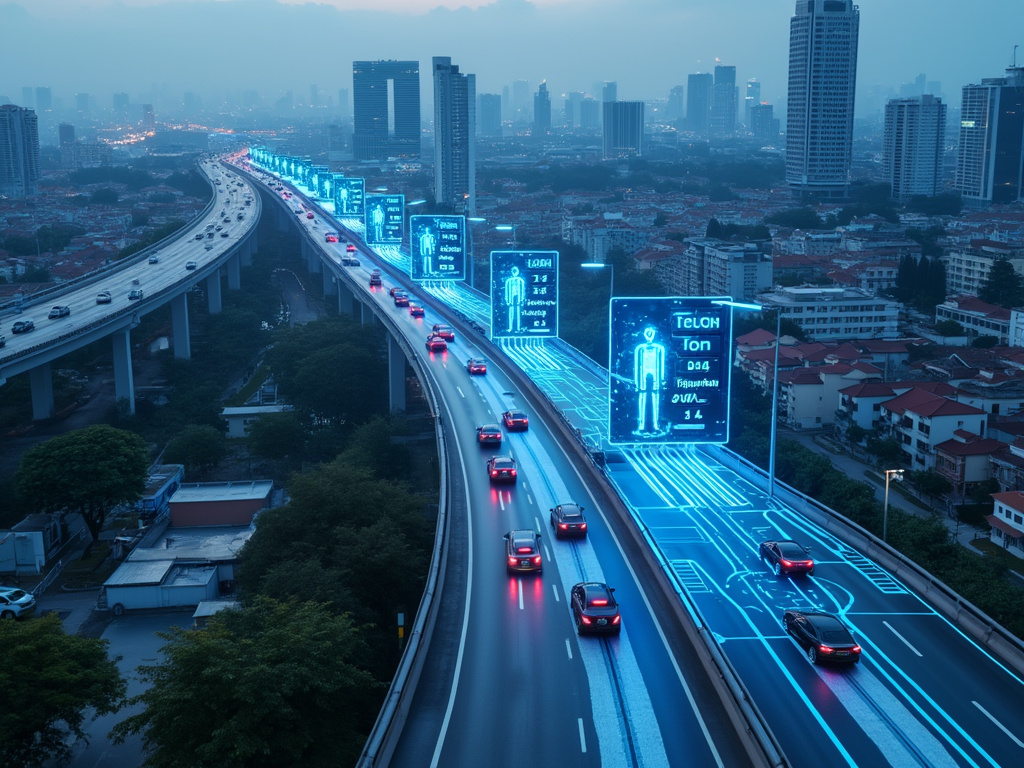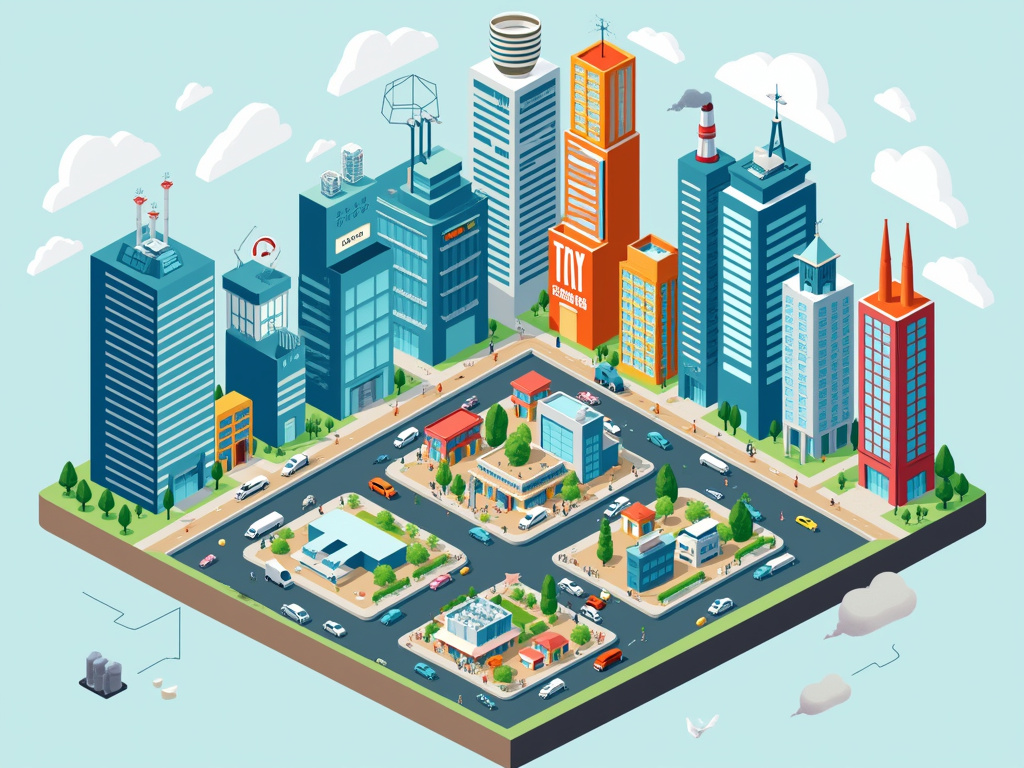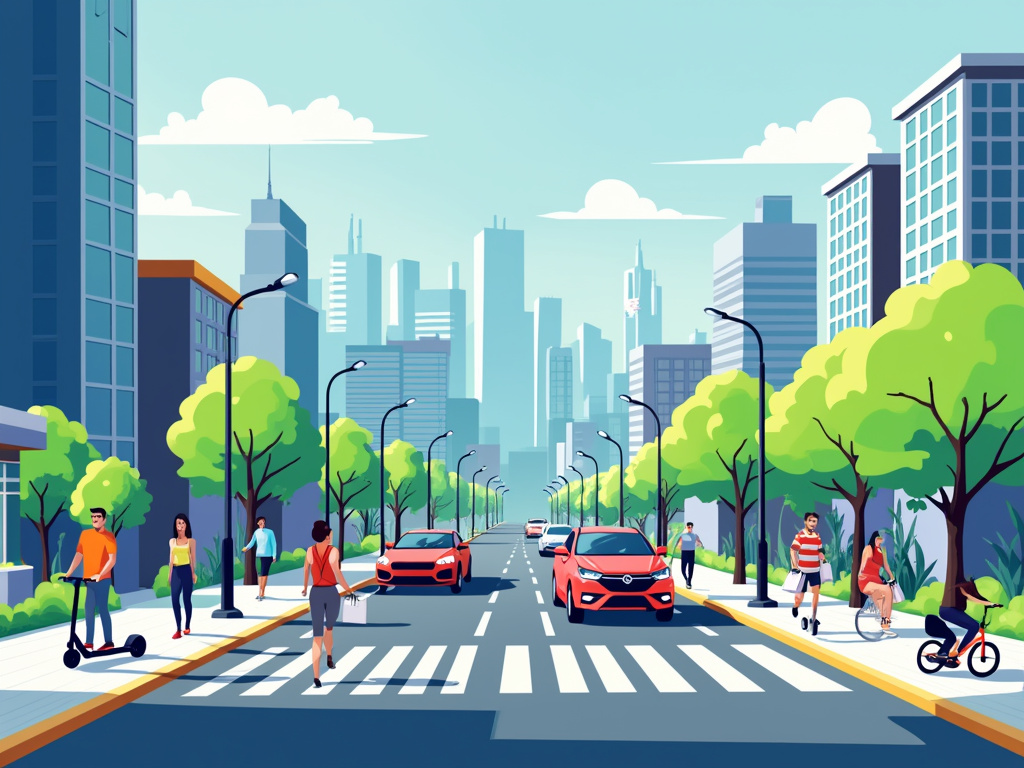Imagine a city where traffic flows smoothly, congestion is minimized, and public transportation runs efficiently. This isn’t just a commuter’s dream—it’s the potential reality offered by multi-agent systems in traffic management. As urban populations grow and roads become more crowded, these intelligent systems are transforming the fight against gridlock.
Multi-agent systems in traffic management leverage artificial intelligence to create a network of autonomous agents working together. Each agent—a traffic light, a bus, or even a smartphone app—collects and processes data in real-time, making decisions that impact the entire urban mobility ecosystem. The result is a more responsive, efficient, and user-friendly transportation network.
But how exactly do these systems work, and what benefits do they bring to our cities? In this article, we’ll explore:
- The integration of AI and machine learning in urban mobility
- How autonomous agents collaborate to reduce congestion
- Real-world implementations and their impact on public transportation
- The challenges and opportunities that lie ahead
Whether you’re a city planner, a tech enthusiast, or simply tired of sitting in traffic, understanding multi-agent systems is key to grasping the future of urban transportation.
Traffic congestion costs the US economy nearly $88 billion annually in lost productivity.
Texas A&M Transportation Institute
As we explore this fascinating field, we’ll see how multi-agent systems are not just alleviating this economic burden but also improving quality of life, reducing emissions, and making our cities more livable. Discover how the invisible hand of AI is reshaping urban mobility.
Components of Multi-agent Urban Traffic Systems
Imagine a bustling cityscape where traffic flows seamlessly, road junctions operate with precision, and parking spaces are optimized for maximum efficiency. This isn’t a far-fetched dream, but a reality made possible by multi-agent urban traffic systems. These sophisticated networks comprise several key components working in harmony to enhance urban mobility.
Here are the core elements that make these systems tick.
Traffic Flow Agents: The Pulse of Urban Movement
At the heart of any multi-agent traffic system are the Traffic Flow Agents. These digital sentinels continuously monitor and analyze the ebb and flow of vehicles across city streets. Using real-time data and predictive algorithms, these agents can:
- Detect congestion hotspots before they become gridlock nightmares
- Suggest alternative routes to drivers, helping to balance traffic loads
- Adjust traffic signal timings on the fly to optimize vehicle throughput
Picture this: It’s rush hour, and a sudden influx of vehicles threatens to choke a major artery. Traffic Flow Agents spring into action, rerouting vehicles and tweaking signal patterns to keep the city’s lifeblood flowing smoothly.
Road Junction Agents: Maestros of Intersection Management
Where roads meet, chaos can ensue—unless Road Junction Agents are on the job. These specialized components focus on managing intersections, those potential bottlenecks that can make or break traffic flow. Their responsibilities include:
- Coordinating traffic light sequences for maximum efficiency
- Prioritizing emergency vehicles and public transit
- Adapting to unexpected events like accidents or road closures
Imagine a busy downtown intersection during a major event. Road Junction Agents work tirelessly, orchestrating a ballet of vehicles, pedestrians, and cyclists, ensuring everyone reaches their destination safely and swiftly.
Car Parking Agents: The Unsung Heroes of Urban Convenience
Often overlooked but crucial to any urban environment, Car Parking Agents play a vital role in reducing congestion and driver frustration. These clever components:
- Monitor parking space availability in real-time
- Guide drivers to open spots, reducing aimless circling
- Implement dynamic pricing to optimize parking utilization
Consider the last time you hunted for parking in a crowded city center. Now envision a future where your vehicle communicates with Car Parking Agents, seamlessly guiding you to an available space, saving time and reducing emissions.
The Symphony of Collaboration
While each agent type has its specialized role, the true magic happens when they work in concert. Data flows freely between components, creating a holistic view of the urban traffic ecosystem. This collaboration enables:
- Predictive analytics to anticipate and prevent traffic issues
- Seamless integration with public transit systems
- Continuous optimization based on historical trends and real-time conditions
As cities grow and evolve, so too must our approach to traffic management. Multi-agent systems represent a leap forward, offering a level of responsiveness and efficiency that traditional methods can’t match. By understanding and leveraging these key components, urban planners and city officials can transform the daily commute from a stressful slog into a smooth, efficient journey.
The next time you navigate your city’s streets with ease, take a moment to appreciate the invisible network of agents working tirelessly to make it possible. The future of urban mobility is here, powered by collaboration, data, and a touch of artificial intelligence magic.
Challenges and Solutions in Multi-agent Traffic Management


Multi-agent systems offer promising solutions for managing complex urban traffic networks, but implementing them isn’t without hurdles. Explore key challenges and innovative approaches to overcome them.
Data Integration: Connecting the Dots
Imagine conducting an orchestra where each musician is playing from a different sheet of music. That’s the challenge of data integration in multi-agent traffic systems. These systems need to seamlessly combine information from various sources—traffic cameras, sensors, GPS data from vehicles, and even social media feeds about accidents or road closures.
Developers are turning to advanced data fusion algorithms and standardized communication protocols to tackle this. Some cities are implementing ‘data lakes’ that act as central repositories, allowing different agents to access and contribute information in real-time. This ensures all ‘musicians’ in our traffic orchestra are playing from the same score.
Scalability: Growing Pains
As cities expand and traffic patterns become more complex, multi-agent systems must scale up without losing efficiency. It’s like managing a small town’s traffic and then suddenly being responsible for New York City’s rush hour.
Distributed computing architectures and cloud-based platforms are proving instrumental. By dividing the workload across multiple servers or even edge computing devices, these systems can handle exponentially more data and agents. Some cutting-edge approaches even utilize blockchain technology to create decentralized, yet secure, networks of traffic management agents.
Real-time Response: The Need for Speed
In traffic management, seconds count. A multi-agent system that can’t react swiftly to changing conditions is as useful as a traffic light stuck on red. The challenge lies in processing vast amounts of data and making decisions fast enough to matter.
Researchers are developing optimized algorithms specifically designed for rapid decision-making. Machine learning techniques, particularly reinforcement learning, allow agents to improve their response times through experience. Additionally, predictive analytics helps these systems anticipate potential issues before they occur, further reducing reaction times.
The Road Ahead
While these challenges are significant, the potential benefits of multi-agent traffic management systems make overcoming them worthwhile. As cities grow and evolve, these intelligent systems will play a crucial role in keeping us moving efficiently and safely.
By leveraging advanced algorithms, robust data structures, and efficient communication protocols, we’re not just solving today’s traffic problems—we’re paving the way for the smart cities of tomorrow. The future of urban mobility is intelligent, interconnected, and incredibly exciting.
Remember, the next time you breeze through a series of perfectly timed green lights, there might be a team of AI agents working behind the scenes to make your commute a little bit smoother.
Case Studies of Multi-agent Systems in Urban Mobility


Illustration of a connected smart city layout.
Multi-agent systems have emerged as a powerful tool for managing complex urban mobility challenges. By examining real-world implementations, we can gain valuable insights into their effectiveness and potential for improving traffic management. Here are some compelling case studies from Singapore, Barcelona, and Birmingham that showcase how these innovative systems are transforming urban transportation.
Singapore: Pioneering Intelligent Transport Systems
Singapore stands out as a trailblazer in leveraging multi-agent systems for urban mobility. The city-state’s journey began in the 1980s with the introduction of its Intelligent Transport Systems (ITS). Today, Singapore’s approach serves as a blueprint for cities worldwide.
At the heart of Singapore’s success is the Electronic Road Pricing (ERP) system, introduced in 1998. This ingenious system uses a network of agents to dynamically adjust toll rates based on real-time traffic conditions. Here’s how it works:
- Smart sensors detect vehicle volumes and speeds across the city
- A central system analyzes this data in real-time
- Toll rates are automatically adjusted to manage congestion
- Drivers receive instant feedback via electronic signboards
The results have been remarkable. Traffic volume on expressways dropped by up to 15%, while average travel speeds increased from 40 to 50 km/h. But Singapore didn’t stop there. The city continues to innovate, with plans for a satellite-based ERP system that will eliminate the need for physical gantries and charge motorists based on distance traveled on congested roads.
Barcelona: Empowering Buses with AI
Barcelona offers another fascinating case study in the application of multi-agent systems to urban mobility. The city’s bus network, operated by Transports Metropolitans de Barcelona (TMB), faced challenges with bunching – when buses on the same route cluster together, causing irregular service.
To tackle this issue, TMB implemented an innovative multi-agent system that uses artificial intelligence to optimize bus operations. Here’s a breakdown of the approach:
- Each bus is equipped with an intelligent agent that monitors its position and passenger load
- These agents communicate with each other and with a central control system
- The system uses machine learning algorithms to predict potential bunching scenarios
- Real-time adjustments are made to bus speeds and dwell times at stops
The results have been impressive. Bus bunching incidents decreased by 35%, leading to more reliable service and increased passenger satisfaction. Barcelona’s success demonstrates how multi-agent systems can address specific urban mobility challenges with targeted, data-driven solutions.
Birmingham: Collaborative Traffic Management
Birmingham, England, provides our final case study in the application of multi-agent systems to urban mobility. The city faced growing congestion issues and sought an innovative solution to improve traffic flow across its network.
In response, Birmingham implemented a multi-agent system called SCOOT (Split Cycle Offset Optimization Technique). This adaptive traffic control system uses a network of intelligent agents to optimize traffic signal timings across the city. Here’s how SCOOT operates:
- Sensors at intersections detect vehicle presence and flow
- Each intersection is managed by an agent that analyzes local traffic patterns
- Agents communicate with neighboring intersections to coordinate signal timings
- The system continuously adapts to changing traffic conditions in real-time
The impact of SCOOT in Birmingham has been significant. Journey times decreased by an average of 20%, while overall network efficiency improved by 15%. The system’s success has led to its adoption in other UK cities and around the world.
Key Takeaways and Future Directions
These case studies from Singapore, Barcelona, and Birmingham illustrate the transformative potential of multi-agent systems in urban mobility. Some key lessons emerge:
- Real-time data and adaptive systems are crucial for effective traffic management
- Multi-agent approaches can address specific local challenges with targeted solutions
- Collaboration between agents (whether vehicles, traffic lights, or central systems) leads to improved overall network performance
- Continuous innovation and refinement of these systems yield ongoing benefits
As cities continue to grow and evolve, multi-agent systems will play an increasingly important role in shaping the future of urban mobility. By learning from these successful implementations and adapting them to local contexts, cities worldwide can work towards more efficient, sustainable, and livable urban environments.
Empowering Traffic Management with SmythOS


A lively city scene showcasing eco-friendly transport.
Traffic congestion is a significant issue affecting cities around the world, but SmythOS is addressing this challenge with its innovative multi-agent platform. By leveraging the power of artificial intelligence (AI) and real-time data analysis, SmythOS provides city planners and traffic managers with a comprehensive toolkit to enhance urban mobility.
At the core of SmythOS’s traffic management solution is its capability to develop and deploy intelligent agents that collaborate to optimize traffic flow. These digital traffic conductors continuously analyze data from various sources—including traffic cameras, GPS signals, and social media—to make quick decisions that help keep cities moving.
One of the key strengths of SmythOS is its robust monitoring and logging capabilities. Traffic managers can gain unprecedented visibility into their city’s transportation network, allowing them to identify bottlenecks, anticipate potential issues, and assess the impact of their interventions. This data-driven approach enables more informed decision-making and helps cities allocate resources more effectively.
The platform’s integration capabilities set it apart from others. SmythOS seamlessly connects with existing urban infrastructure and third-party systems, creating a unified ecosystem for traffic management. This interoperability allows cities to utilize their current investments while opening up new opportunities for optimization.
Let’s explore some practical applications of SmythOS in action:
- Adaptive Traffic Signal Control: SmythOS agents can dynamically adjust traffic light timings based on real-time conditions, which reduces wait times and improves traffic flow.
- Incident Response Optimization: By analyzing patterns and historical data, the platform can recommend optimal routes for emergency vehicles and assist in coordinating response efforts.
- Public Transit Enhancement: SmythOS can integrate with bus and train systems to improve scheduling and provide passengers with more accurate arrival predictions.
- Smart Parking Solutions: The platform can direct drivers to available parking spots, minimizing congestion caused by drivers circulating in search of spaces.
Most importantly, SmythOS is designed with scalability in mind. As cities grow and change, the platform can adapt to meet evolving needs and incorporate new technologies. This forward-thinking approach ensures that investments in SmythOS will continue to yield benefits for years to come.
SmythOS is transforming urban mobility. By utilizing AI and real-time data, we are not only managing traffic but also working toward creating smarter, more livable cities. For city planners and traffic managers aiming to alleviate congestion and improve the quality of life for residents, SmythOS offers a powerful and accessible solution. By combining cutting-edge AI capabilities with practical, real-world applications, SmythOS is paving the way for the future of urban transportation.
Conclusion: Advancing Urban Mobility
The successful implementation of multi-agent systems in traffic management is ushering in a new era of urban mobility.
By utilizing collaborative AI, cities can address longstanding challenges related to transportation efficiency and sustainability. These systems provide a level of responsiveness and adaptability that was previously unattainable in urban traffic management.
Platforms like SmythOS are leading this transformation by offering tools to create and deploy sophisticated multi-agent networks. SmythOS simplifies the development process and provides robust monitoring capabilities, enabling cities to implement smarter and more efficient traffic solutions tailored to their unique needs.
The future of urban transportation looks promising. Advancements in AI and multi-agent technologies will bring even greater improvements. We can expect to see more intuitive systems that not only respond to current traffic conditions but also predict and prevent potential issues. This proactive approach will lead to smoother traffic flow, reduced emissions, and more livable urban spaces.
Although the journey toward sustainable urban mobility is ongoing, multi-agent systems are guiding us in the right direction. As these technologies mature and become more integrated into our urban environments, they will play a crucial role in creating cities that are not only smart but also equitable and environmentally conscious. By embracing these innovations, we are advancing urban mobility and reimagining city living for future generations.